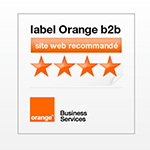I find quite ironic that, while emphasizing the transformations needed / involved on the road to Enterprise 2.0, most case studies and literature on the subject, specifically when it comes to ‘adoption’, focus on the steps, and so rarely on the whole journey. Although collaboration is claimed to (hopefully) become our global way of working, much accent is put on technologies, practices, pilots, behaviors, management,… introducing tools and recipes without considering the constraints and mutations stressing the whole system: Enterprise itself. This sometimes makes me think of physicians talking about organs, topical cures and diseases without ever mentioning, or taking into account, the whole human body.
The vocabulary used is itself indicative of this state of mind. ‘Enterprise 2.0 adoption’ sounds like a technology-inclined, more process- that people-centric, one at a time methodology. Don’t misunderstand me; I am not saying that we should skip pilots, onboard anyone with a gentle smile and shout “we got the tools, we are 2.0 now”. Very few have tried, and even fewer are succeeding. Number of connections on a social platform doesn’t mean anything beyond brainless propaganda and top-down socialwashing. We will need to keep on coaching, evangelizing and scouting emergent practices for quite a long time. Seeding, then nurturing, is the correct attitude. Taking a broader view on Enterprise 2.0 diffusion dynamics in organizations might help leading the transformation at systemic scale.
Corporate culture, individual empowerment and management model are the three main assets any organizational change has to deal with. Let us see how a collaborative paradigm could fit an organization, given different corporate backgrounds and agents of change, and consider three main different approaches.
Holistic diffusion
Convergence between corporate culture and a leader’s vision offers, indeed, an ideal loam, not only to nurture a collaborative environment, but to leverage a whole social business ecosystem around the customer. Transforming such a business is only a matter of time and good communication, as the right practices get weaved into each company’s department. This might sound like an ideal world, but we all know the examples of Zappos and Cisco…
Empathic diffusion
Most companies aren’t designed for collaboration. Fostering its diffusion throughout the organization requires undertaking the usual steps we, practitioners, all know about: finding the right champions, targeting business departments already prone to work in a collaborative way, communicate about successes, and iteratively extend the experience. Enthusiasts will become ambassadors, and initiatives will spread to other parts of the business. Michael Idinopulos described this approach pretty well on his blog. Chances are good that this may help compensating for an unfavorable internal culture, with good support from the management. No wonder that most present case studies are following a similar approach: empathy, which Michael calls enthusiasm, is the glue of human relationships.
Fractal diffusion
One of the most discussed aspects of Enterprise 2.0 diffusion strategies is the necessity and the difficulty to involve the middle management. Our businesses hierarchical structure put a heavy pressure on managers, and their role is key to most business processes. Asking them to change to embrace collaboration and its inherent complexity is often perceived like asking them to dig their own grave. In this case, empathy won’t work, and even best evangelizers will fail along the way.
Modern businesses are inherently fractal, composed of nested routines, structures and know-how which deeply influence the behavior of the whole company, even without explicitly noticing it. The real backbone, the DNA of a company is sometimes hidden, buried behind processes or Excel dashboards. Identifying the core competencies of a business, whether it be in teams, departments or divisions, and leveraging collaboration in those places, will produce patterns which are reproducible throughout the whole organization. New practices, new managing routines will emerge, which can then be injected into other teams, departments and divisions. This, of course, will challenge managers. Some will adapt, some won’t. But new leaders will emerge, paving the road for a more empathic or holistic approach.






Fine post Thierry!
Enterprise 2.0 adoption is impossible, I think. If anything, it must be Enterprise 2.0 adaption. Of all the changes of the last decades this is such a radical one that you can’t just go out and buy your way into it: you must go in and submerge in it
It’s the difference between change and growth I talk about in my latest post (http://www.martijnlinssen.com/2010/07/growth-flows-naturally-from-inside.html) – I’m unsure you can change your enterprise into an E2.0 one, I think you can only grow into it (which is a contradiction in terms as I state that the Proximity and Intimacy needed to do so are missing)
Middle management may very well be the sacrificial lamb of E2.0. I’m putting my money on your Empathic diffusion!
Thanks Martijn.
I totally agree with you: ‘Let’s grow this world to new heights’…
We won’t be able to undertake such a change by applying recipes from the past, and by trying to fit a square peg into a round hole.
Pingback: Harold Jarche » Quotable Week on Twitter
Pingback: Harold Jarche » Quotes from 2010